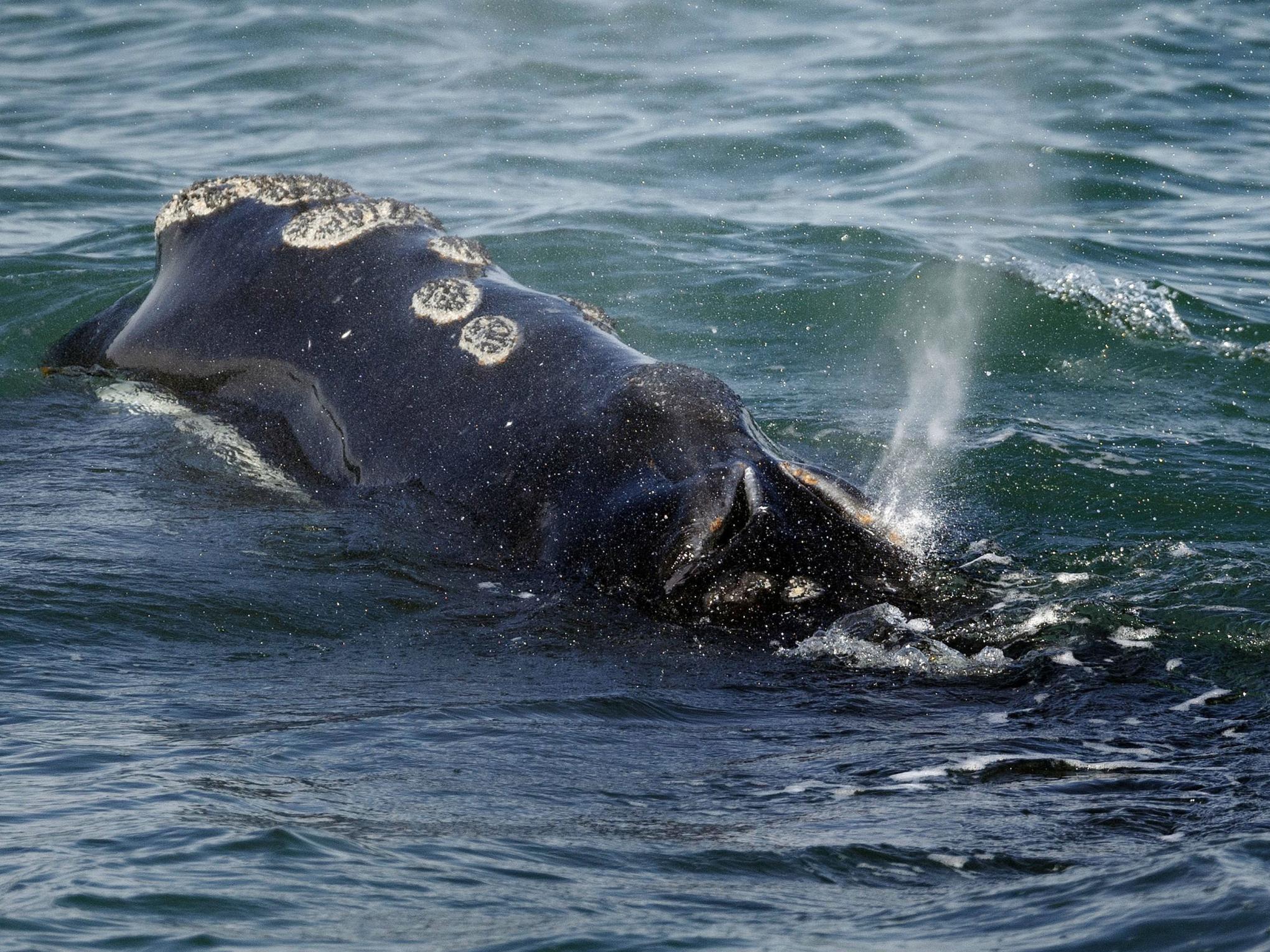Extinction fears as six rare North Atlantic right whales die in space of a month
At least three whales died after they were hit by ships. There are only 100 reproductive females left

Six North Atlantic right whales have died in the past month, leading scientists to sound the alarm about a potentially catastrophic loss to the population.
There are little more than 400 right whales left and only 100 reproductive females. All six of the dead whales were found in the Gulf of St Lawrence off Canada, and at least three appear to have died after they were hit by ships.
Right whales have suffered high mortality and poor reproduction in recent years, particularly in 2017. The whales appear to be travelling in different areas of the ocean than usual because of food availability, said Nick Record, senior research scientist at Bigelow Laboratory for Ocean Sciences in Maine.
That shift, linked to the warming of the ocean, has apparently brought whales outside protected zones and left them vulnerable, he said.
Dr Record said: “Animals like whales that have to figure out where their food is, they have to figure out a new environment as they go. You can almost think of the whales like climate migration.”
Right whales are so named because they were considered the “right whale” to hunt during the commercial whaling era of long ago. They could often be hunted close to the coast and provided a reliable source of whale oil, a precious commodity of the time.
Those characteristics led to the decimation of the population, and it has struggled to rebuild since. The animals numbered as few as about 270 as recently as 1990, and as many as about 480 in 2010.
They are massive animals – up to 50 feet long – with broad black bodies and powerful tails. Their long arching mouths can open wide enough for an adult human to stand inside although they eat mostly plankton, which they filter out of the seawater with long curtains of baleen.
Tragic photos show beached whales
Show all 15With so many dying and so few being born, it is thought that right whale population will no longer be viable in 25 years unless something changes. Ship strikes and entanglement in fishing gear are two top threats to right whales often cited by conservationists.
A speed restriction of 10 knots in the area where the whale was first observed remained in effect, according to the Fisheries and Oceans Canada agency. It also said it has increased surveillance over the Gulf of St Lawrence to assess the location of the whales and make sure mariners comply with rules.
Government officials and conservationists have called for a swift response to protect the endangered species.
Chris Oliver, assistant administrator for the National Oceanic and Atmospheric Administration’s National Marine Fisheries Service, said he is calling for a meeting with the Canadian government to request “immediate action to provide comprehensive protection” for the whales.
“Preventing any additional deaths of North Atlantic right whales is our highest priority. To do this, we must work with our partners to strengthen protections immediately,” Oliver said in a statement.
Additional reporting by AP
Subscribe to Independent Premium to bookmark this article
Want to bookmark your favourite articles and stories to read or reference later? Start your Independent Premium subscription today.

Join our commenting forum
Join thought-provoking conversations, follow other Independent readers and see their replies